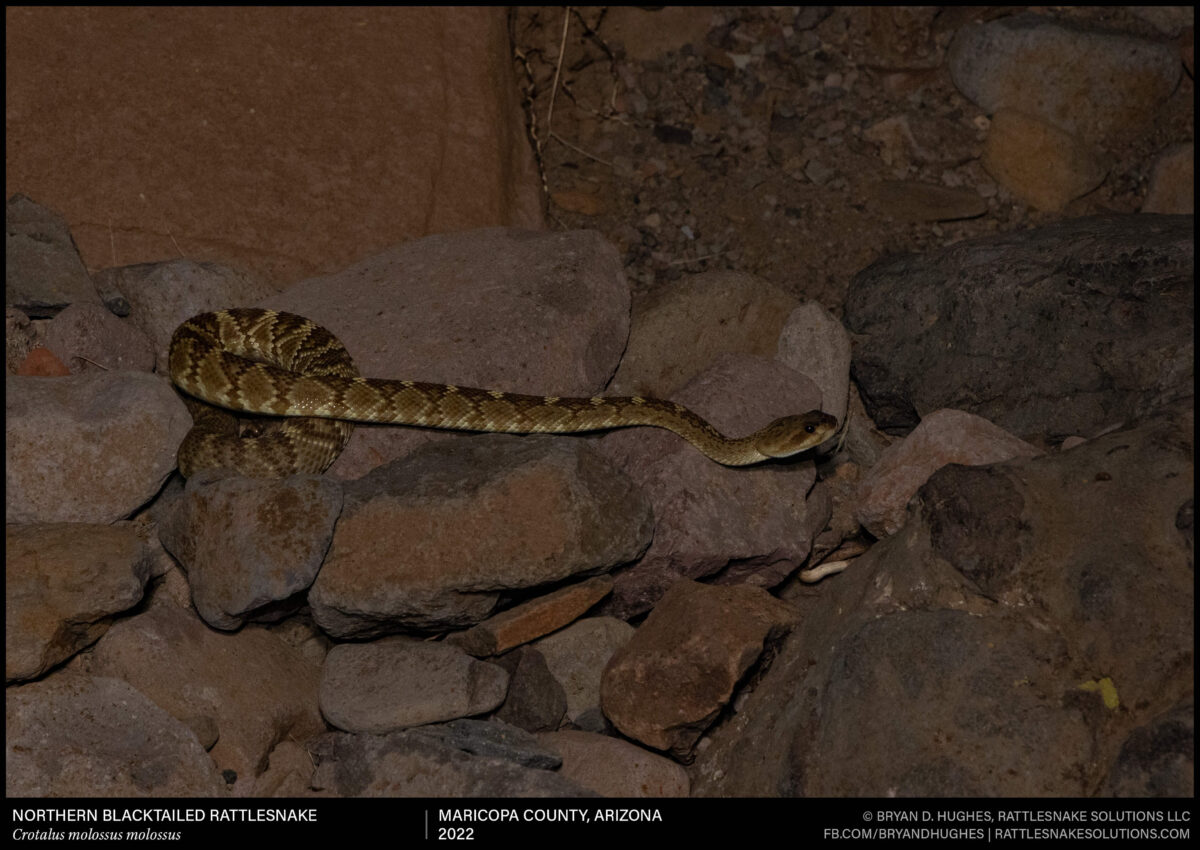An Arizona Black Rattlesnake from the western end of their range. Locals in the area often refer to them as “timber rattlers”, though actual Timber Rattlesnakes are a distinct species that is not found in the western states. This one was found on a relatively cold, rainy weekend in August, active on the surface just before the area was saturated.










